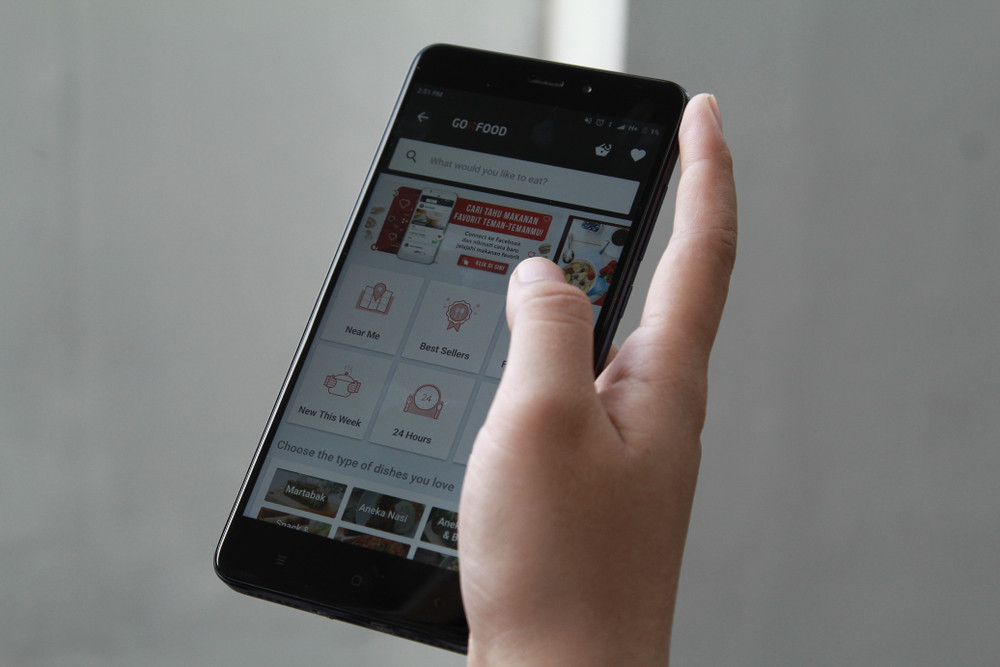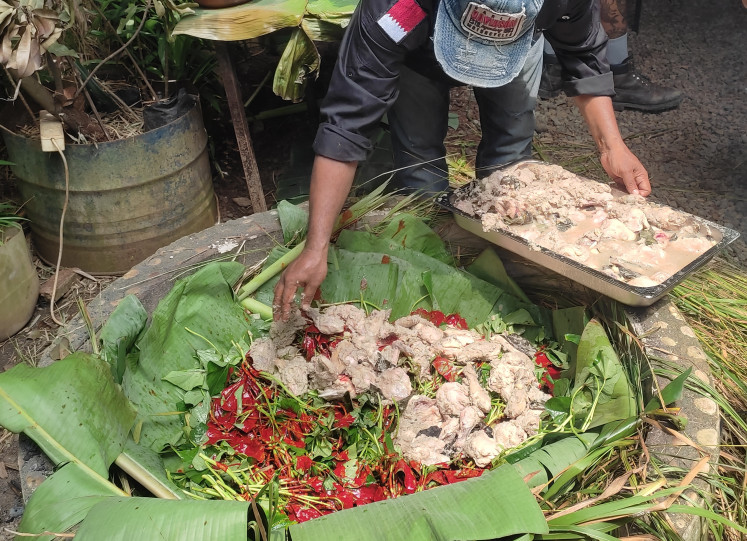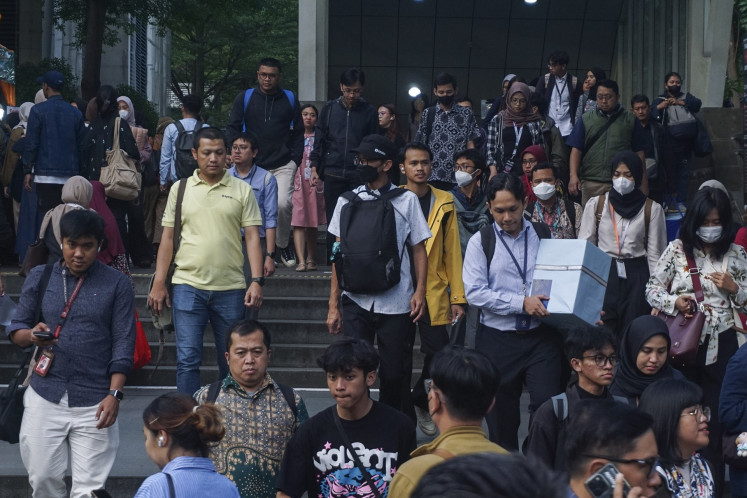Popular Reads
Top Results
Can't find what you're looking for?
View all search resultsPopular Reads
Top Results
Can't find what you're looking for?
View all search resultsPoultry in motion: Go-Food records 10 million orders of chicken over one month
Go-Food received more than 10 million orders for chicken during Pesta MaMiMuMeMo Go-Food, a month-long food promotion held between Nov. 5 and Dec. 6, 2018.
Change text size
Gift Premium Articles
to Anyone
W
ith the popularity of ayam geprek (smashed fried chicken with chili) in 2018, it was no surprise to see that a variety of chicken dishes was the most-ordered item on Go-Food, an online food delivery service by ride-hailing application Go-Jek.
The platform announced on Monday that it had received more than 10 million orders of chicken during Pesta MaMiMuMeMo Go-Food, a month-long food promotion held between Nov. 5 and Dec. 6, 2018.
Go-Food marketing vice president Aristo Kristandyo said during a press conference that paket nasi (rice served with side dishes) was the second most popular dish on Go-Food with 3.5 million orders during the promotion, followed by coffees and noodles with 1.5 million orders each.
In 2018, the most popular categories on Go-Food were chicken dishes, rice, coffee, noodles, gorengan (fried snacks) and martabak (sweet or savory Indonesian-style pancake). From the data shared above, Aristo concluded that Indonesians actually loved to have online culinary trips.
Although local food enthusiasts have great affection for chicken dishes, the platform predicted that there would be two food trends in 2019, namely healthy food and unique snacks.
Go-Jek chief commercial expansion Catherine Hindra Sutjahyo revealed that healthy food is currently on the rise.
“Especially seeing that it is still around New Year, [many] include healthy food as one of their new year's resolutions,” said Catherine.
According to Go-Jek's big data analysis, there was an increase in searches for healthy food keywords, such as salad, green tea and burger sushi.
Read also: Go-Jek sees boom in food delivery business
Meanwhile, for unique snacks, Catherine referred to fun and unexpected snacks, such as Indomie donut (donut-shaped instant fried noodles).
She said that the team of Go-Jek's data scientists predicted the trends based on the number of transactions and searches.
“People log in to Go-Food and search for [particular food], allowing us to see what their interests are,” she explained.
During the event, the tech company also shared several interesting facts about Indonesian online food ordering habits, such as people spending less on lunch and orders for coffees mostly come at 3-4 p.m.
Aristo also shared that the application received the biggest orders during dinner time, between 7 and 9 p.m.
“The food industry is very innovative [with] many changes and adjustments. Hopefully, after we share the data, the [food] merchants can respond to it and create an innovation toward this direction,” said Catherine.
In addition to sharing information and predicting food trends, Catherine said the company aimed to make Go-Food a discovery platform.
“If you open Go-Food, you can see that each user has different food recommendations based on the location and order history,” said Catherine.
“Slowly, we want Go-Food to become a platform that helps people to discover [new dishes] and empower micro, small and medium enterprises,” she said, sharing that around 80 percent of Go-Food's merchants were small and medium enterprises. (wng)











